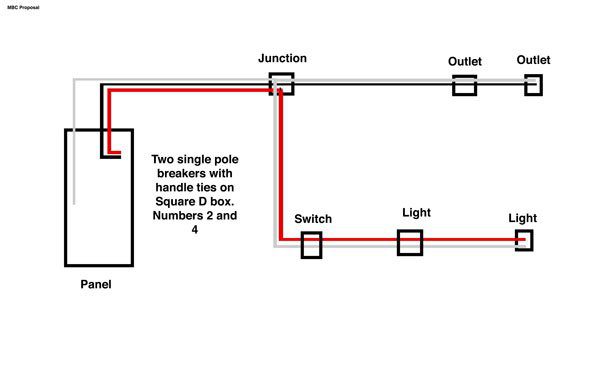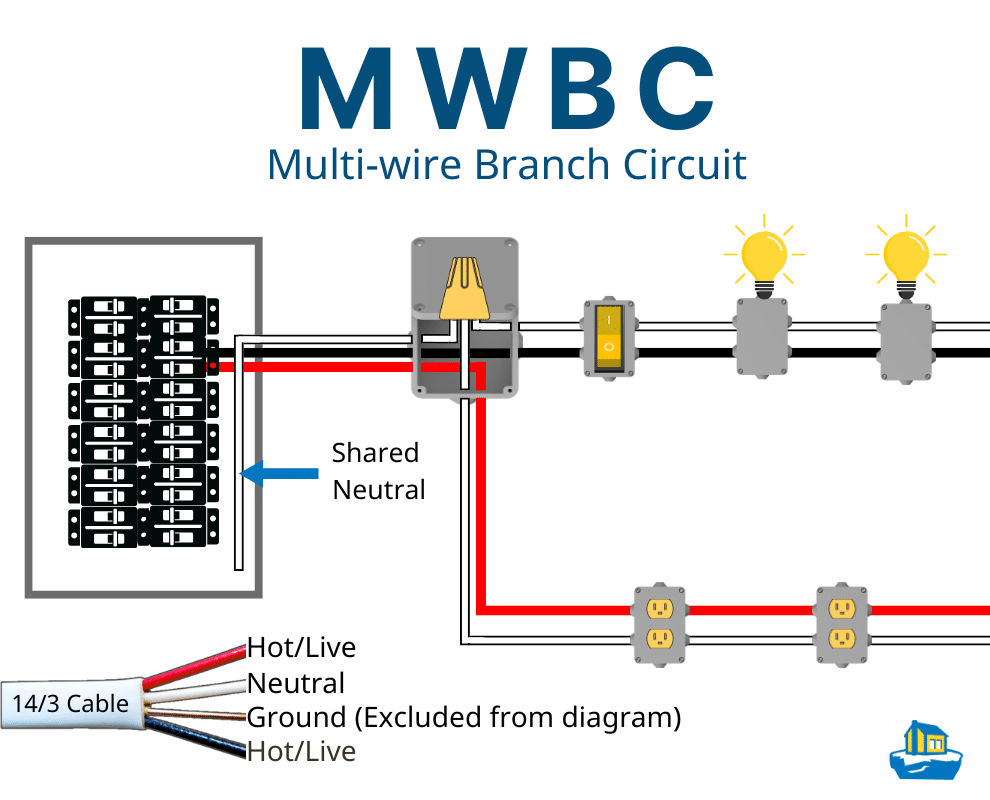4.9 1890+ Google Reviews

What is an MWBC?
MWBC is an acronym for a multi-wire branch circuit. It is a wiring method when an electrician uses one cable for two circuits. The two circuits share one neutral. A more technical definition would be when two ungrounded conductors share one grounded conductor. Although I have read strong opinions against the use of MWBCs, there is nothing wrong with them when appropriately wired.
It can be confusing to understand, but here are the basics.

Yes. Multi-wire branch circuits are "legal" according to the NEC (National Electric Code). Section 210.4(B) of the NEC allows and regulates MWBC's.
According to NEC 210.4(B) both breakers for the MWBC should be tied together. In addition, this is reflected in Virginia Residential code E3701.5.1, which states,
"Each multiwire branch circuit shall be provided with a means that will simultaneously disconnect all ungrounded conductors where the branch circuit originates"
An ungrounded conductor is a hot conductor. So in layman's terms, the breakers need to be tied together so the power will be shut off to both hot wires in the MWBC.
This is done to prevent an electrician from being shocked. For example, if an electrician doesn't disconnect both hot wires in an MWBC or does not know he is working on an MWBC, the circuit he is working on will be energized from the other hot wire in the MWBC.
In addition, the MWBC breakers must originate from opposite bus bars. For instance, most residential panels have two bus bars powered from L1 and L2.
When wired improperly an MWBC can cause the neutral to become overloaded.
Specifically, if both circuits originate from the same line (same bus bar) the current running through the neutral will be the sum of both circuits. Alternatively, if both circuits originate from opposite phases (different bus bar) the current running through the neutral will be difference of both circuits.
Let's consider 15 amp circuits in a scenario where both circuits draw 10 amps at the same time. If both circuits are on different phases, the current through the neutral will be 0 (the difference between both circuits.) If they are on the same phase, the current through the neutral will be 20 amps (the sum of both circuits).
20 amps is too high for 15 amp circuits on a 14-3 cable. The neutral will be overloaded. This can cause the insulation to deteriorate and can cause arc fault fires.
As defined earlier, an MWBC is essentially two circuits that share one neutral. With this in mind, an MWBC's purpose is to save time and money. Notably, copper is expensive, and you can save dozens of feet of copper by running less electrical cable. Accordingly, this will result in decreased time and money.
The most common place we see MWBCs is at the garbage disposal and dishwasher. This is because it's easy to run a cable to the kitchen cabinet, and then split it off into two different circuits.
